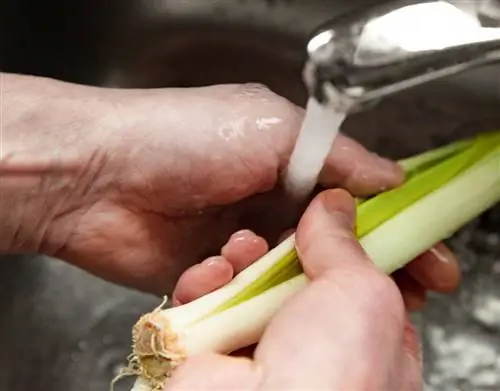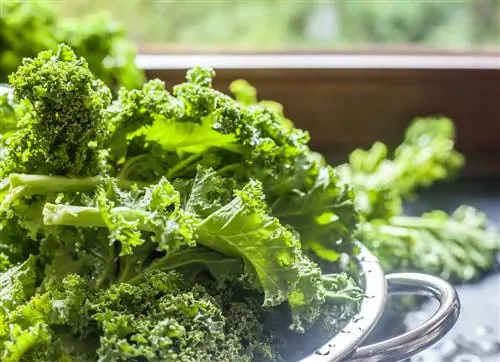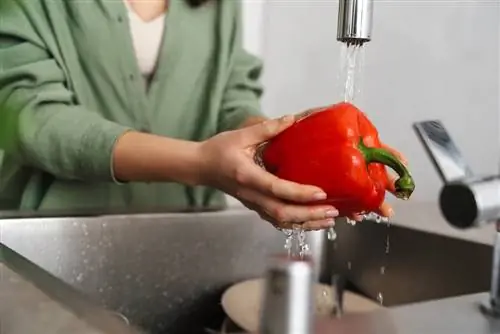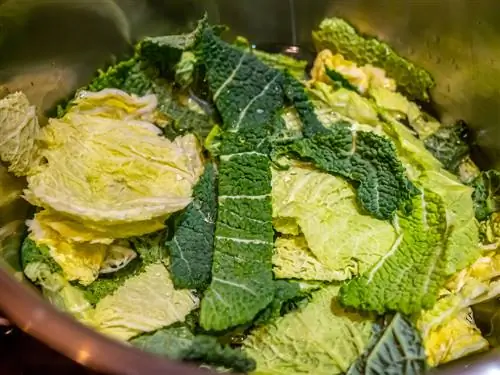- Author admin [email protected].
- Public 2023-12-16 16:46.
- Last modified 2025-01-23 11:22.
Washing leeks is a tough task: the many layers of the poles mean that dirt and unwanted lodgers can hide wonderfully and are not easy to wash off at first glance. With the right technique, it's not that difficult to clean the vegetables and prepare them for consumption.

How do you wash leeks correctly?
To wash leeks properly, first remove the root and outer leaves, cut the leek in half and fan the leek. Then rinse it under running water, making sure to rinse off any sand and soil particles and dab it with kitchen paper.
Preparation
First, use a very sharp kitchen knife to remove the roots and the outer, usually unsightly leaves and cut the stem in half. Now the leek can be easily fanned out for washing.
Wash leeks thoroughly
- Clean the leeks under running water.
- To do this, initially hold the bar so that the closed side points upwards. In this way, grains of sand and soil particles can be washed away.
- Then turn the rod over and rinse the end well.
- Shake out thoroughly and dab with kitchen paper.
Cut leeks
Depending on the dish, the whole leek or just the light part of the leek is used. Don't just throw away washed parts that you don't need, but collect them in a container in the freezer along with other leftover vegetables. This means you always have fresh soup vegetables on hand when you need them.
Leek can be cut into fine rings or used in larger pieces, for example for baking.
Sometimes a second wash is necessary
- When cutting, you notice that there are still sand residues in the leek, carefully separate the rings with your fingers and put the leek in a sieve.
- Clean the vegetables thoroughly again under running water until you can no longer detect any soil residue.
More kitchen tips
- Leeks are in season all year round.
- From June to September you can get mild summer leeks, which are ideal as a vegetable side dish.
- The taste of winter leeks, which you can find in stores from October to May, is strong and sharper. The darker the leaves are colored, the more intense the taste is.
- The dark green part of the leaves is also quite hard. Use these preferably as an aromatic addition to soup.
- When shopping, look for crisp sticks. Leek, whose root hairs have turned brown and which already has limp leaves, is no longer fresh and has already lost much of its great aroma.
Tip
In some kitchens, leeks live in the shadows and are only used to flavor soups. The vegetables can do so much more and taste extremely delicious fried, boiled and baked.






